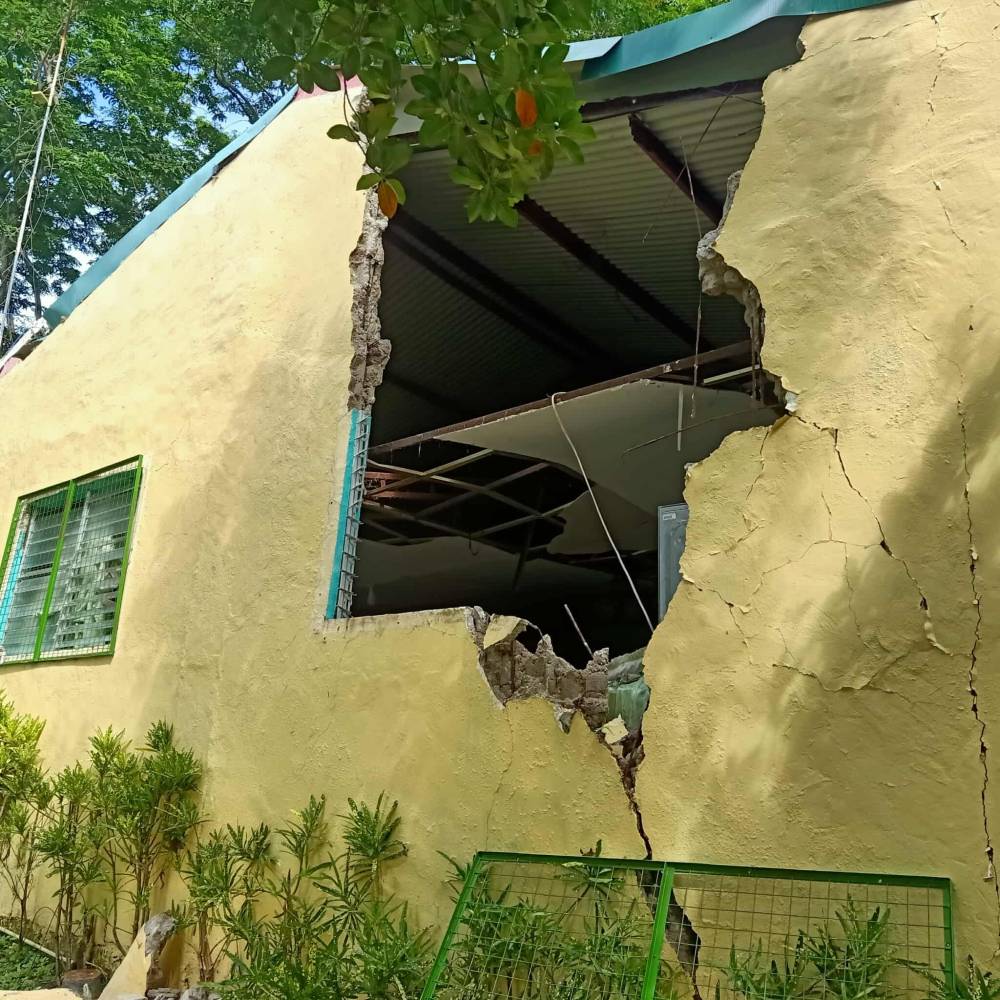Deadly Cebu quake leaves P1.67-B damage to schools

ILOILO CITY—Twenty days after a magnitude 6.9 earthquake struck Cebu, the Department of Education (DepEd) reported that 3,605 schools in different regions, even those outside the province, reported damage worth an estimated P1.67 billion.
The earthquake, which struck Bogo City on Sept. 30, sent widespread tremors across the Visayas and parts of Luzon, causing significant structural damage to school buildings and other public infrastructure. This left many students displaced and severely disrupted school operations.
The DepEd, however, said rehabilitation efforts were ongoing. Engineering teams were assessing the stability of the damaged facilities, and proposals for reconstruction are being prepared in cooperation with the Department of Public Works and Highways and other government agencies, it added.
Impact on students
The quake also killed 75 people, mostly in northern Cebu; displaced hundreds of residents whose houses crumbled or were damaged by the ground shaking, forcing them to live in tents or modular shelters set up by the government; and caused major structural damage to roads, bridges and other facilities, both public and private.
Moreover, the quake affected over a quarter of a million students.
The DepEd Disaster Risk Reduction and Management Service (DRRMS), in a situation report on Monday, said the earthquake affected 256,578 students and 15,028 teachers in 30 provinces. Of these, 1,736 students and 227 teachers were reported to have been hurt, in varying degrees of injury.
In-person classes remained suspended in 17.2 percent of the affected schools, primarily due to structural damage or ongoing safety inspections.
Rehabilitation
To ensure the continuity of learning, the DepEd has shifted to alternative modes to deliver classroom lessons. A total of 2,690 schools have adopted modular distance learning, while 123 schools are using blended learning. Additionally, 105 schools have opted for flexible learning, and 107 schools are offering online distance learning.
The hardest-hit region was Central Visayas, mainly Cebu, where the earthquake’s epicenter was located. This region reported the most damage, with 2,113 affected schools. Of these, 2,912 classrooms were assessed to be heavily damaged, while 2,501 classrooms were destroyed.
Other affected regions include Western Visayas (Iloilo, Aklan, Capiz, Guimaras and Antique provinces), which saw 746 schools damaged; Central Luzon (Aurora, Bataan, Bulacan, Nueva Ecija, Pampanga, Tarlac and Zambales provinces) with 207 affected schools; and Zamboanga Peninsula (Zamboanga del Norte, Zamboanga Sibugay, Zamboanga del Sur and Sulu provinces), where 193 schools were damaged.
Across all affected areas, the DepEd reported that 14,142 classrooms had minor damage, 4,025 had major damage, and 3,985 were destroyed. In addition, 762 water and sanitation facilities were also damaged.
In response to the disaster, the DepEd deployed its Rapid Needs and Damage Assessment teams to conduct detailed assessments of school structures and revalidate the extent of the damage.
This will ensure that the data used for rehabilitation planning is accurate and updated.
In addition to structural assessments, psychological first aid was being provided to teachers and students to help them cope with trauma and mental health issues following the disaster.
The DepEd said it was also coordinating with the National Council for Disaster Risk Reduction and Management, local governments, and regional response clusters to facilitate immediate assistance and mobilize resources. The joint efforts focused on areas with the most severe structural damage, and temporary learning spaces are being set up where necessary.
Call for preparedness
In its advisory, the DepEd-DRRMS noted the importance of improving earthquake preparedness and disaster risk reduction measures in schools.
It urged all educational institutions to revisit their contingency plans, regularly conduct safety drills, and ensure the structural integrity of classrooms and facilities.
The report also reaffirmed the DepEd’s commitment to maintaining learning continuity despite the disruptions caused by the disaster.
“Education cannot wait even during emergencies. Our priority is the safety and welfare of our learners and personnel while ensuring that learning continues,” the report said.

















